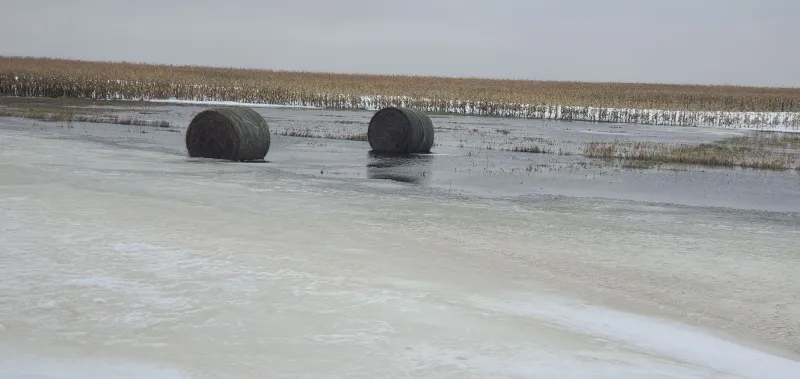Caring for Livestock During and After Flooding
SAFE SHELTER AND EVACUATION

Make a plan that represents your flood risk as it relates to your livestock housing and pasture accessibility. Options may include safety in enclosed structures, higher pasture ground, evacuation to higher elevation, or relocation to local alternatives such as auction barn, fairgrounds, etc.
Unconfined livestock can usually take care of themselves during floods. Do not let them become trapped in low-lying pens. A number of safety precautions can be taken for animals housed in barns during a flood.
A necessary evacuation from shelter to a safer place may be necessary in emergency. If flooding arises in traditional livestock buildings, animals have a greater chance of survival outside.
Be sure animals are evacuated before floodwaters enter barns and other enclosed livestock areas. Animals sometimes refuse to leave during a rapid rise of water and may drown inside if the water rises high enough.
In broad, level flood plains where floodwaters are rarely deeper than 3 or 4 feet, you may plan to build mounds of soil on which livestock can stay until floodwaters recede. Locate mounds on higher ground where they will not be washed away by fast-flowing water.
Facilities and fence fixing post-flood will require efforts to prioritize keeping affected livestock together. Temporary fencing and shelter may offer flexibility in management during tough times. Attempt to minimize overcrowding as situation allows.
